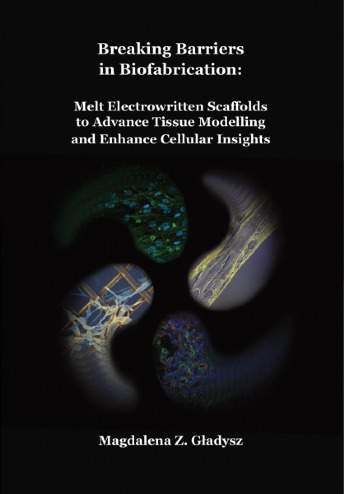PhD defence M. (Magdalena) Gladysz
| When: | Tu 18-03-2025 11:00 - 12:00 |
| Where: | Academy Building |

Breaking barriers in biofabrication: melt electrowritten scaffolds to advance tissue modelling and enhance cellular insights
Tissue engineering (TE) is an interdisciplinary field that combines engineering, polymer chemistry, materials science, and cell biology to develop tissues and organs. This thesis focuses on advancing TE using melt electrowriting (MEW), a 3D printing technique, to create in vitro models for studying tissue-specific functions and disease mechanisms.
Key applications include the fabrication of scaffolds for the blood-brain barrier (BBB) and trabecular meshwork (TM). MEW scaffolds enabled the investigation of physical barriers affecting drug transport and efficacy, highlighting their role in drug delivery and treatment optimization. For the TM, a multilayered scaffold mimicked its structure and supported glaucoma drug testing, demonstrating translational potential.
The thesis also introduced biodegradable polyhydroxyalkanoates (PHAs) for skin tissue engineering, offering a sustainable alternative to poly(ε-caprolactone) (PCL). PHBV-based scaffolds exhibited tunable degradation and supported cell adhesion, proliferation, and viability, underlining their promise for biomedical applications.
Additionally, MEW scaffolds were combined with collagen to model tumour microenvironments, enabling the study of breast cancer cell migration. Differences in cellular behaviour, including epithelial and mesenchymal traits, were observed, providing insights into metastasis mechanisms.
Overall, this research highlights MEW’s versatility in replicating tissue structures, combining techniques to elucidate disease mechanisms, and advancing TE applications. The findings underscore MEW's biomedical potential, with implications for drug development, tissue modelling, and regenerative medicine.
|
Promotors:
| |
|
Copromotor:
|
